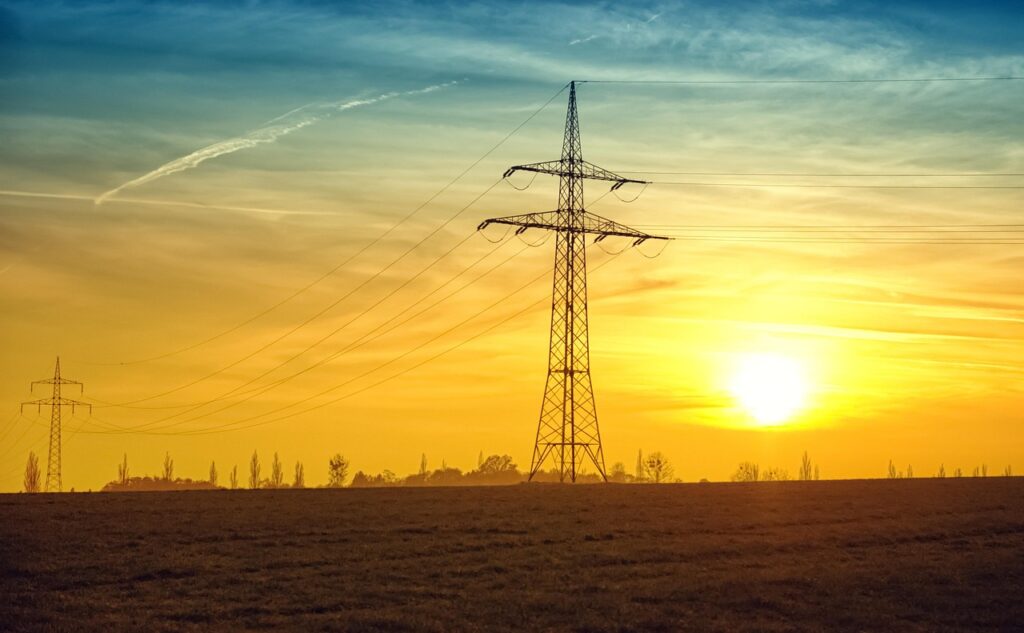Britain’s grid currently cannot sustain clean energy operation for even one hour despite ambitious plans to achieve 95% renewable power by 2030, highlighting the fundamental stability challenges facing high-renewable electricity systems. The April 28 blackout across Spain and Portugal, triggered by voltage surges and frequency deviations that conventional power plants were unable to control, demonstrates how grid inertia deficits create systemic vulnerabilities as renewable energy penetration increases.
Technical Foundation of Grid Inertia
Traditional electricity grids derive inertia from large spinning generators in coal-fired and gas power plants, which provide resistance to sudden frequency changes through rotational momentum. This mechanical inertia smooths supply-demand fluctuations and maintains grid stability during transient events. Solar and wind generation, however, connect to grids through power electronics that contribute no rotational inertia, creating stability gaps as conventional generation retires.
Flywheel systems address this deficit by providing synthetic inertia through spinning steel rotors that accelerate or decelerate in response to variations in grid frequency. Unlike battery storage systems that require power electronics conversion, flywheels can provide an instantaneous mechanical response to grid disturbances, mimicking the behavior of conventional synchronous generators.
Commercial Deployment and Performance Data
Statkraft’s Greener Grid Park in Liverpool demonstrates operational flywheel implementation, featuring two 40-ton flywheels that supply one percent of England, Scotland, and Wales’ total inertia requirements. The facility combines flywheels with synchronous compensators to provide both inertia and voltage control services, operating without fossil fuel combustion or carbon emissions.
UK grid operator NESO contracted 11 similar synchronous compensator and flywheel projects by 2023, with additional installations under development. This represents the world’s first systematic procurement of grid-stabilizing services through competitive contracting, following the 2019 blackout that affected parts of Britain due to grid frequency drops.
Cost-Effectiveness and Technical Comparison
Engineering analysis suggests steel flywheels offer superior cost-effectiveness and durability compared to lithium-ion batteries for grid inertia applications. Professor Keith Pullen of City St George’s University of London and director of flywheel startup Levistor notes that flywheels avoid the degradation issues and replacement cycles associated with battery storage systems.
However, direct cost comparisons remain limited by the nascent state of flywheel deployment and varying grid service requirements across different markets. Battery systems provide energy storage duration that flywheels cannot match, while flywheels excel in instantaneous power response applications where batteries require power electronics delays.
Demand Profile Changes and Future Requirements
Grid stability challenges will intensify as electric vehicle charging, heat pump adoption, and data center expansion create more variable and unpredictable demand patterns. These “shock loads” require rapid grid response capabilities that synthetic inertia systems can provide more effectively than conventional generation ramping.
Professor David Brayshaw of the University of Reading emphasizes that higher renewable penetration levels necessitate more sophisticated grid stability solutions. Current renewable-heavy systems like the Iberian Peninsula demonstrate vulnerability to sudden voltage and frequency events that traditional grid management cannot adequately address.
Regional Implementation Disparities
Britain and Ireland lead grid stability service procurement compared to continental European approaches. Guy Nicholson, Statkraft’s zero-carbon grid solutions head, identifies system operator leadership through competitive contracting as the key differentiator. Continental European grid operators have not implemented similar systematic approaches to synthetic inertia procurement.
The Spanish blackout may catalyze broader European adoption of grid stability technologies, though regulatory frameworks and market mechanisms for procuring these services remain underdeveloped in most jurisdictions. Event-driven policy changes typically follow major grid failures rather than proactive stability planning.
Deployment Speed and Scale Challenges
Current flywheel deployment rates appear insufficient for renewable energy transition timelines. Nicholson warns that Britain cannot sustain clean energy operation for even brief periods despite having functional renewable capacity, because gas turbines must continue operating to maintain grid stability.
The gap between renewable generation capability and grid stability infrastructure represents a critical bottleneck for decarbonization targets. Even when solar and wind produce adequate energy, conventional generators must remain online to provide essential grid services that synthetic inertia systems could theoretically replace.
Technology Integration and Operational Complexity
Flywheel systems require integration with existing grid infrastructure and coordination with other stability services. Synchronous compensators paired with flywheels provide voltage control capabilities that pure inertia systems cannot deliver, suggesting that comprehensive grid stability solutions require multiple complementary technologies.
The operational experience from Liverpool and other UK installations provides valuable performance data for scaling these systems. However, grid stability requirements vary significantly across different network configurations, renewable penetration levels, and demand patterns, limiting direct technology transfer between regions.
Market Development and Investment Drivers
NESO’s competitive contracting approach creates market incentives for grid stability technology development, though this model requires regulatory support and long-term planning commitment. Without systematic procurement mechanisms, private investment in grid stability infrastructure remains limited by uncertain revenue streams.
Government policy statements indicate recognition of flywheel technology, though deployment acceleration requires coordinated planning between grid operators, technology developers, and regulatory authorities. The Department for Energy Security and Net Zero acknowledges working with industry partners on grid stability technologies while noting current deployment inadequacy for decarbonization objectives.
Grid inertia management through flywheel technology represents a necessary but insufficient component of renewable energy system integration. Success requires coordinated deployment of multiple stability services, regulatory frameworks that incentivize investment, and operational experience that validates performance under diverse grid conditions. Current deployment rates suggest significant scaling acceleration will be necessary to support renewable energy transition timelines across European markets.
